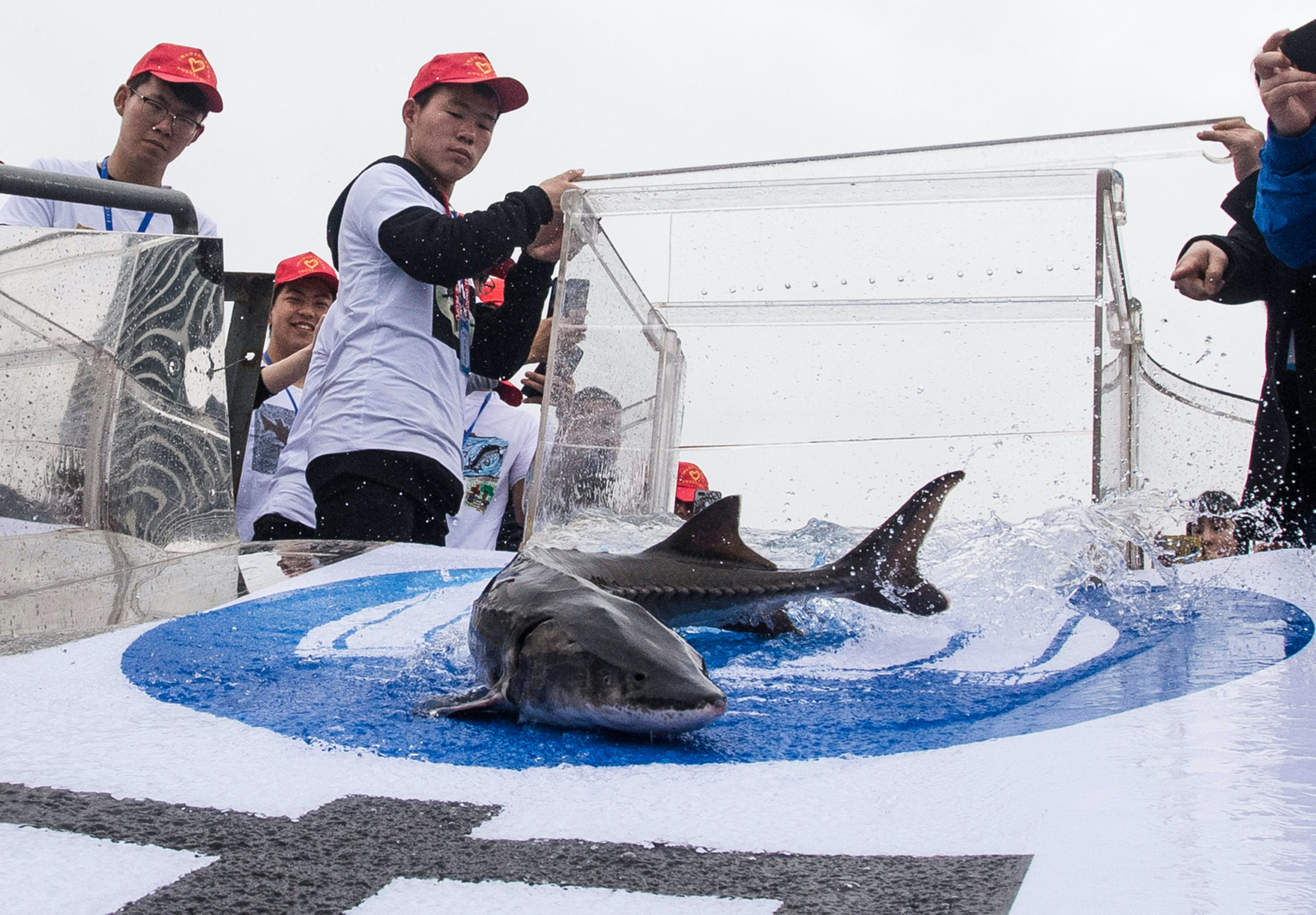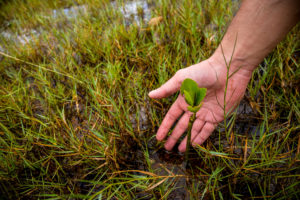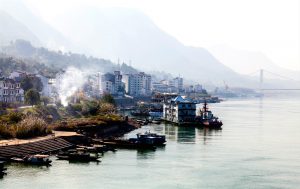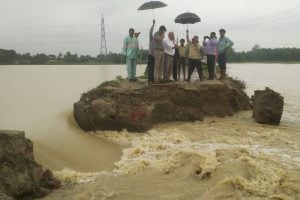In late 2019, Chinese researchers published a paper estimating that somewhere between 2005 and 2010 the Yangtze’s largest fish, the Chinese paddlefish (also known as the Chinese swordfish), had gone extinct.
Late though the news was, it offered an appropriate overture to a ten-year ban on fishing on the Yangtze that came into force in January of this year. The ban and associated compensation measures, announced the previous January, was part of China’s Yangtze protection strategy, launched back in 2016.
The basin-wide ban gave hope that fish on the river would be protected and that their populations would recover.
But it will not remove all the threats facing migratory fish such as the paddlefish. According to the paper referred to above, over-fishing was not the only reason for its extinction. Another was habitat fragmentation, meaning more ecological restoration work is needed.
What a ban cannot do
In 20 years, China has gone from establishing reserves designed to protect fish stocks, to instituting seasonal and then permanent fishing bans. But conservation efforts have not kept pace with fishing and development. Catches have fallen and the Yangtze ecosystem is severely damaged.
On 27 September, World Rivers Day, the WWF and the Chinese Academy of Sciences’ Institute of Hydrobiology, along with other scientific institutions, issued their 2020 Living Yangtze report. A scientist leading the evaluation describes the river as “sick indeed”. The middle reaches of the river, and the four major freshwater lakes – Dongting, Panyang, Taihu and Chaohu – received even grimmer diagnoses.
In the 1950s, over 420,000 tonnes of fish were caught in the Yangtze every year using the simple fishing methods of the time. Yet, until the ban, today’s more modern methods were netting less than 100,000 tonnes. Fish are so rare in the Yangtze that the usual methods for catching them are no longer effective, according to Cao Wenxuan, an ichthyologist and member of the Chinese Academy of Sciences. Only illegal methods now work, he added.
During a 2017 survey of the river, Wei Qiwei, co-author of the paper on the extinction of the Chinese paddlefish, and chief scientist at the Yangtze River Fisheries Institute of the Chinese Academy of Fishery Sciences, was unable to find a further 140 previously recorded fish species. Of these, 60% were endangered. Wei has told the media that some may now be extinct.
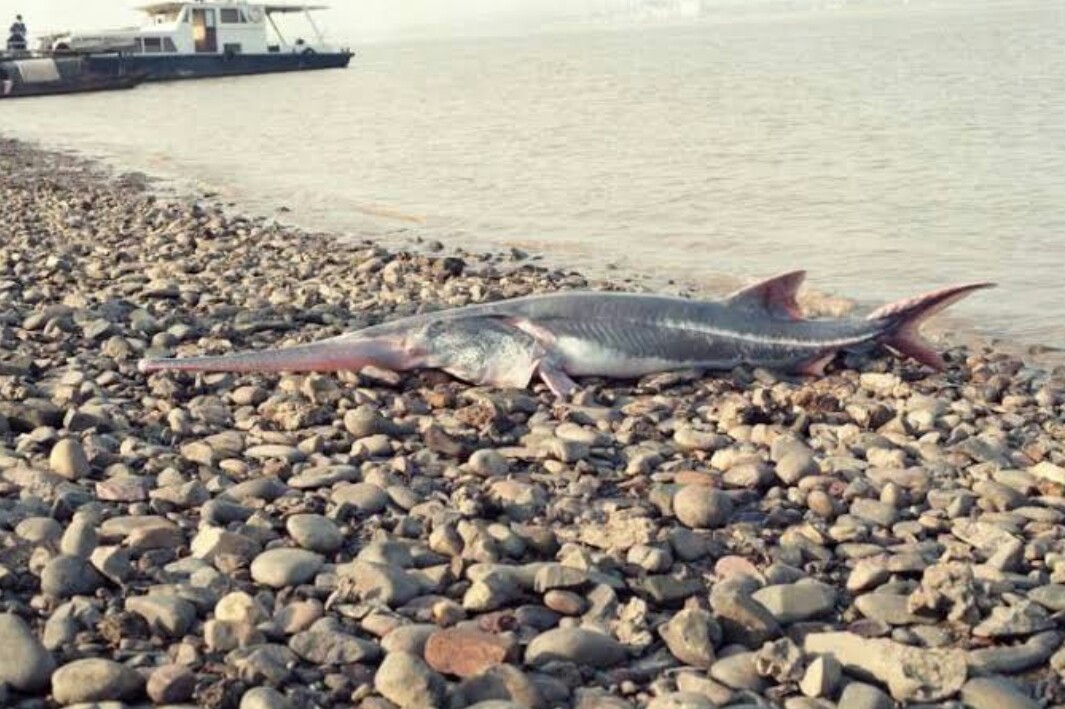
Cao Wenxuan first proposed a decade-long fishing ban for the Yangtze in 2006, saying this would give fish stocks time to recover. Many of the Yangtze’s commercially fished species take three or four years to reach maturity, so a 10-year period allows two or three generations to breed.
But the situation is more complicated for those species that are migratory. For example, there were over 2,000 Chinese sturgeon, which migrate between rivers and the sea, in the wild in the 1980s. But by 2013, less than 100 survived. Spawning of the four major carp species – the black, grass, silver and bighead carps – which migrate from lakes to the middle reaches of the Yangtze had dropped to 1% of 1986 levels, later recovering to only 20% after conservation measures were put in place. The Coreius guichenoti, which used to migrate up and down the river, is considered to be the first species unique to the Yangtze to have become extinct due to hydropower development on the upper reaches. According to research by the Institute of Hydrobiology of the Chinese Academy of Sciences, these are the victims of dams and sluice gates, and a fishing ban alone will not help.
76%
The drop in the global population of freshwater migratory fish between 1970 and 2016
The Chinese paddlefish used to migrate from the middle reaches of the Yangtze in March and April, to spawn in the Jinsha River upstream. But in the 1980s, the route was cut off by the building of the Gezhouba dam.
At a January meeting on endangered Yangtze species organised by the Ministry of Agriculture, one expert put the loss of the paddlefish down to “various overlapping factors, including the blocking of migratory routes, loss of spawning grounds, overfishing, shipping, water pollution and availability of food.” Wei Qiwei said one of the main causes of the extinction was the construction of the Gezhouba dam, in an interview with the media.
The Jinsha River, the Chinese name for the upper reaches of the Yangtze has long been a destination for migratory fish, including the paddlefish, Chinese sturgeon and Dabry’s sturgeon. It now has a cascade of four hydropower dams, generating as much power as two Three Gorges. The Coreius guichenoti, which prefers rapidly flowing currents, lost much of its habitats when the Three Gorges reservoir was filled, and also lost migratory routes when the Jinsha and Yalong rivers were dammed, causing its population to plummet.
There are 20 dams planned for the Jinsha River, known as China’s “hydropower base”. In 2018, a National Audit Office report on environmental protection along the Yangtze economic belt found that as of the end of 2017 there were 24,100 small hydropower dams along the length of the river, with overdevelopment reducing flow to some degree along 1,017km. The four major carp species, which migrate between lakes and the river, were threatened by sluice gates. There are almost 50,000 dams or sluice gates on the Yangtze. All lakes along the river, except Poyang, Dongting and Shijiu, have sluice gates, according to the paper from the Institute of Hydrobiology.
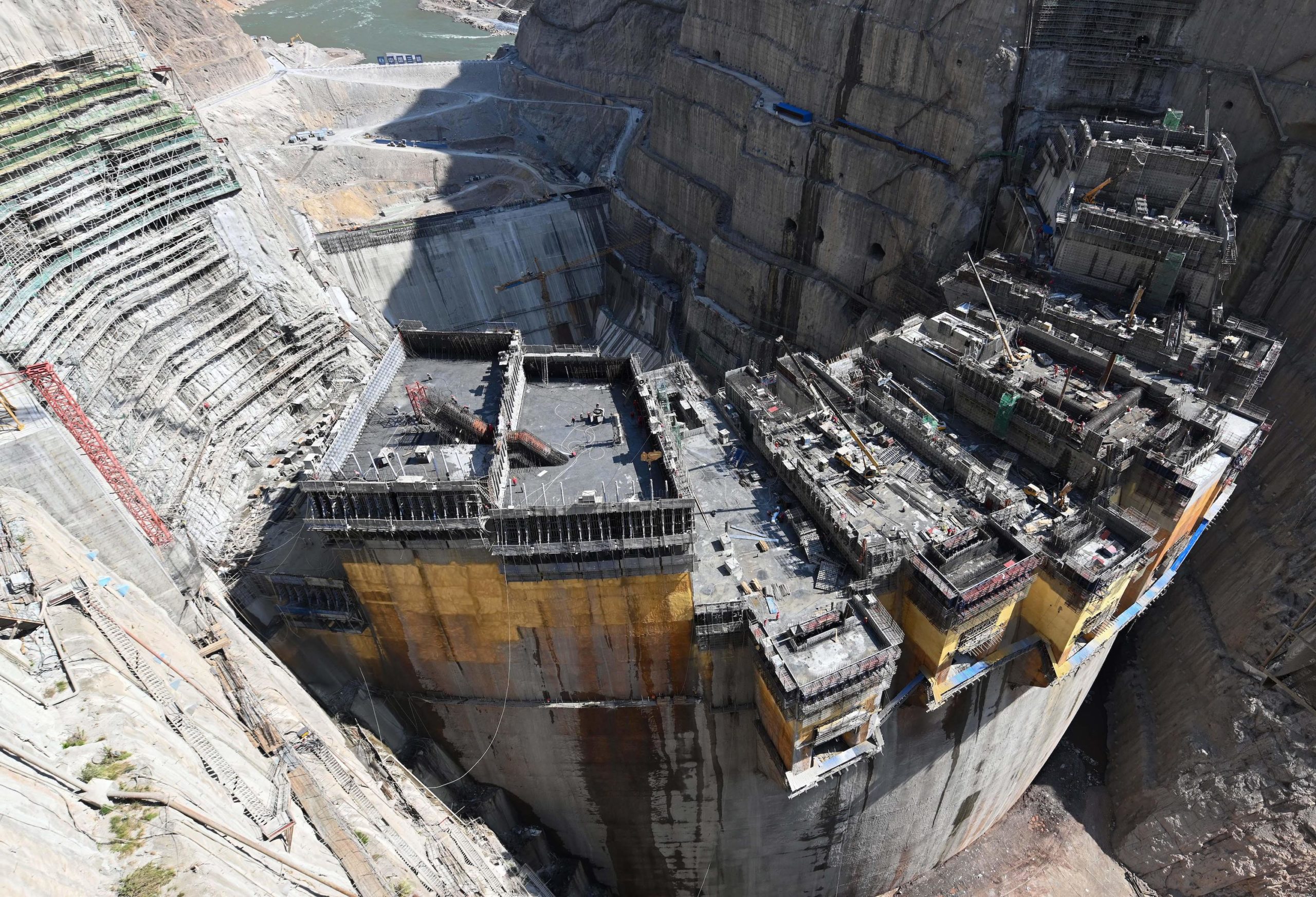
These prevent fish reaching spawning grounds, fragment habitats and change the speed, temperature and quantity of water in the river, as well as changing the environment for fish eggs and juveniles, further reducing survival rates.
One remedy is fish ladders, which allow fish to pass around a dam or other barrier by leaping up a series of small steps. But these are very rarely built in China. A piece of research pointed out that the Gezhouba dam chose to release captive-bred fish to supplement populations in the early 1980s. over In the two decades that followed, the majority of new dams built did not include fish ladders. It was only from 2006 onwards, after policy changes, that fish conservation measures improved.
China’s first large fish ladder, stretching 1.4km with a height differential of 15m, was built alongside the Changzhou dam in Guangxi, and allowed species including the Chinese paddlefish and Reeve’s shad to travel upstream. However, so far no protected species have been observed using the ladder. Most fish ladders have been built, or are planned, in Sichuan and the south-west – but these often only have a height differential of a few metres.
Ren Wenwei, head of WWF China’s Shanghai office and formerly its head of freshwater projects, says some of China’s fish ladders are not yet actually helping protect migratory fish, some remain at the trial stage. A lot more basic research is needed if these ladders are to actually help fish get around dams, he added.
This loss of migratory routes is not a problem exclusive to China. According to a report released by the World Fish Migration Foundation this July, the global population of freshwater migratory fish fell by 76% between 1970 and 2016 – with dams and other obstacles being the main culprit. A US campaign of dam removal has succeeded in slowing that loss.
But again, it is not just the dams and sluice gates. A recent WWF emergency recovery plan for freshwater biodiversity points out that protection of these migratory species and their environment will require much more to be done, including improving water quality, protecting and restoring habitats, and deploying environmental flows.
An environmental flow is water provided to maintain ecosystems and their benefits in areas where water flow is regulated because of competing water needs, such as before and after a dam.
Building on small rays of hope
Ren Wenwei says that as long as the Gezhouba dam is in place and lacks a fish ladder, conservation of the Chinese sturgeon – a species only to be found migrating between the sea and the Yangtze – can do no more than protect remaining habitats downstream of the dam.
He told China Dialogue that there is one ray of hope for the Chinese sturgeon. In the past five years, researchers have occasionally seen juvenile fish at the mouth of the Yangtze, where it meets the East China Sea outside Shanghai. This indicates the species is trying to adapt to the changes to its range of migration made by humans, using new spawning grounds to replace those it cannot reach. Where the fish are actually spawning has been subject to debate, but scientists generally agree it is 80 to 100km downstream of the Gehzhou dam. A provincial reserve for the Chinese sturgeon has been established in Yichang, Hubei, stretching 60km from the dam down to Yangjiaxi in Zhicheng.
“The question is how to make the most of that ray of hope,” Ren said. He is sure the 10-year fishing ban will help, as the recovery of populations of small fish will improve the Yangtze ecosystem. Also, the treatment of the hundreds of millions of tonnes of wastewater that flow into the Yangtze every year is doing a great deal to help the Chinese sturgeon survive.
Nor can the implementation of environmental flows be ignored. Reservoirs are usually managed to ensure power generation, prevent floods and provide water for irrigation – but environmental flows aim to benefit the environment.
He told China Dialogue that the Chinese sturgeon is a cold-water fish, with an ideal spawning temperature of 16-20C. But the cascading reservoirs upstream make water warmer, and as a result temperature at the fish’s spawning grounds often rise by 3.6C during its spawning period of October to February, not falling to 20C until a month later. This delays spawning. The same issue exists at the remaining spawning grounds of the four major carp species found upstream of the dam.
Apart from water temperature, the amount of water flow also affects breeding. In spring, the Three Gorges Reservoir releases more water, which affects the breeding of the four carps. And in autumn it retains more water, which affects the breeding of the Chinese sturgeon. Solving this would require coordination across all the dams upstream of the Three Gorges.
Since 2011, the Three Gorges Group has, under the direction of the Yangtze Flood Prevention and Drought Relief Headquarters, carried out over 10 tests of environmental flow regimes in seven consecutive years, releasing water to create the flood peaks that the four carps need to breed. In 2017, the dams at Xiluodu, Xiangjiaba and the Three Gorges carried out their first coordinated trials of environmental flow regimes. The carps were seen to breed in large numbers during these trials, with significant increases in spawning on previous years, indicating the trials had been successful.
Ren said that implementation of environmental flows can also benefit people. For example, in 2014 the Three Gorges dam released water to combat an influx of salt water at the mouth of the Yangtze, protecting Shanghai’s Qingcaosha reservoir, which supplies water to the city.
He said that environmental flow regimes “meet, as far as is possible, the needs of people, fish and birds.” And while some successes have been seen, he thinks “there’s still room for a lot more to be done, and we need more basic research and experimentation for its improvement.”
Towards basin-wide coordination
Environmental flow regimes are a typical example of work that needs coordination across authorities and river regions. That is exactly what the environmental governance of the Yangtze basin lacks.
Ma Yi, head of the Yangtze River Fishery Supervision and Administration Office, spoke frankly at a Ministry of Agriculture meeting early this year, saying one reason for the failure to protect aquatic life on the Yangtze was a lack of coordination across government departments. There is also a consensus that dams and other obstacles, pollution and mining of sand and stone are all causing the continuing degradation of aquatic life on the river.
The Yangtze, which flows 6,300km across China, is managed through a vast bureaucratic structure. According to Lyu Zhongmei, director of Chinese Law Society’s Environmental Resources Law Research Association, water management across the basin involves over 30 laws, which grant 76 functions to 15 different central government bodies. The river runs through the jurisdiction of 19 provincial governments, to which 100 functions are delegated.
The urgent matter is to set up both a powerful river basin governance body and a sound set of environmental standards.Ren Wenwei, head of WWF China’s Shanghai office
Sometimes it is competition between government departments and local governments that causes the fragmentation of fish habitats. A typical example is what happened after the building of the Three Gorges Dam. Downstream water levels fell, so less flowed into lakes along the Yangtze, and during the dry season water even started flowing out of Poyang Lake back into the river. To preserve local resources, local governments built sluice gates to retain water in their lake. A 2.8km concrete barrier between the Yangtze and Poyang Lake was considered, but fortunately did not go ahead.
The division of management functions means that environmental data is gathered by various bodies and for different purposes, making comparison difficult. “There is a lack of a unified data platform, or a full understanding of basic environmental data. That makes it hard to carry out practical conservation work,” said Ren Wenwei. He suggests that fishers out of work due to the fishing ban be trained to monitor fish biodiversity. The authorities could establish a platform on which to share that data, which would provide greater evidence for whether or not conservation efforts are working.
In December 2019, shortly after the announcement of the Yangtze fishing ban, a draft of the Yangtze Protection Law was passed to the Standing Committee of the National People’s Congress for consideration. According to Peng Feng, a researcher at the Shanghai Academy of Social Sciences’ Institute of Law, this differs from existing laws on water issues as it takes the protection of an entire basin ecosystem as its starting point. Also, the draft makes an “Index of biological integrity” part of a system of standards for the basin. Currently, only levels of chemicals are used to measure water quality, and that is inadequate for protecting biodiversity.
The explanatory notes to the proposed law say it demarcates responsibilities for all parties; clarifies the relationships between central and local governments and different government departments; and establishes a comprehensive system for managing the basin. According to an official with the Ministry of Agriculture, rules on coordination mechanisms are found throughout the entire draft law, covering cross-departmental coordination and overlap of responsibilities. On 13 October, the Standing Committee examined a second draft, which now makes clear the State Council will establish coordinating mechanisms for the Yangtze basin.
But there are doubts as to whether these “mechanisms” will be enough to ensure effective cooperation across departments and regions. In an earlier media interview, Lyu Zhongmei said that the value of the new law will be undercut without a dedicated decision-making body for the entire basin. Referring to the initial draft of the law, she pointed out that coordination cannot take place without someone responsible for that coordination, and that requires an authority to be in place.
Ren Wenwei told China Dialogue that if the aims of the law are to be achieved, “the urgent matter is to set up both a powerful river basin governance body and a sound set of environmental standards.”
